Your Shooting Stance: Is Everything You Know Wrong?
February 20th, 2022
5 minute read
Editor’s Note: This is the first part in a four-part series by Massad Ayoob on the major two-handed shooting stances. We encourage you to also read his next article in the series titled “How to Shoot a Pistol Using the Classic Weaver Stance”.
Right up there with “9mm versus .45” and “striker versus hammer” is the argument of “Weaver versus Isosceles stance.” In each category, you’ll find adherents on one side or the other who will insist that their favorite shooting stance is The One True Way, and anyone who disagrees is an infidel.
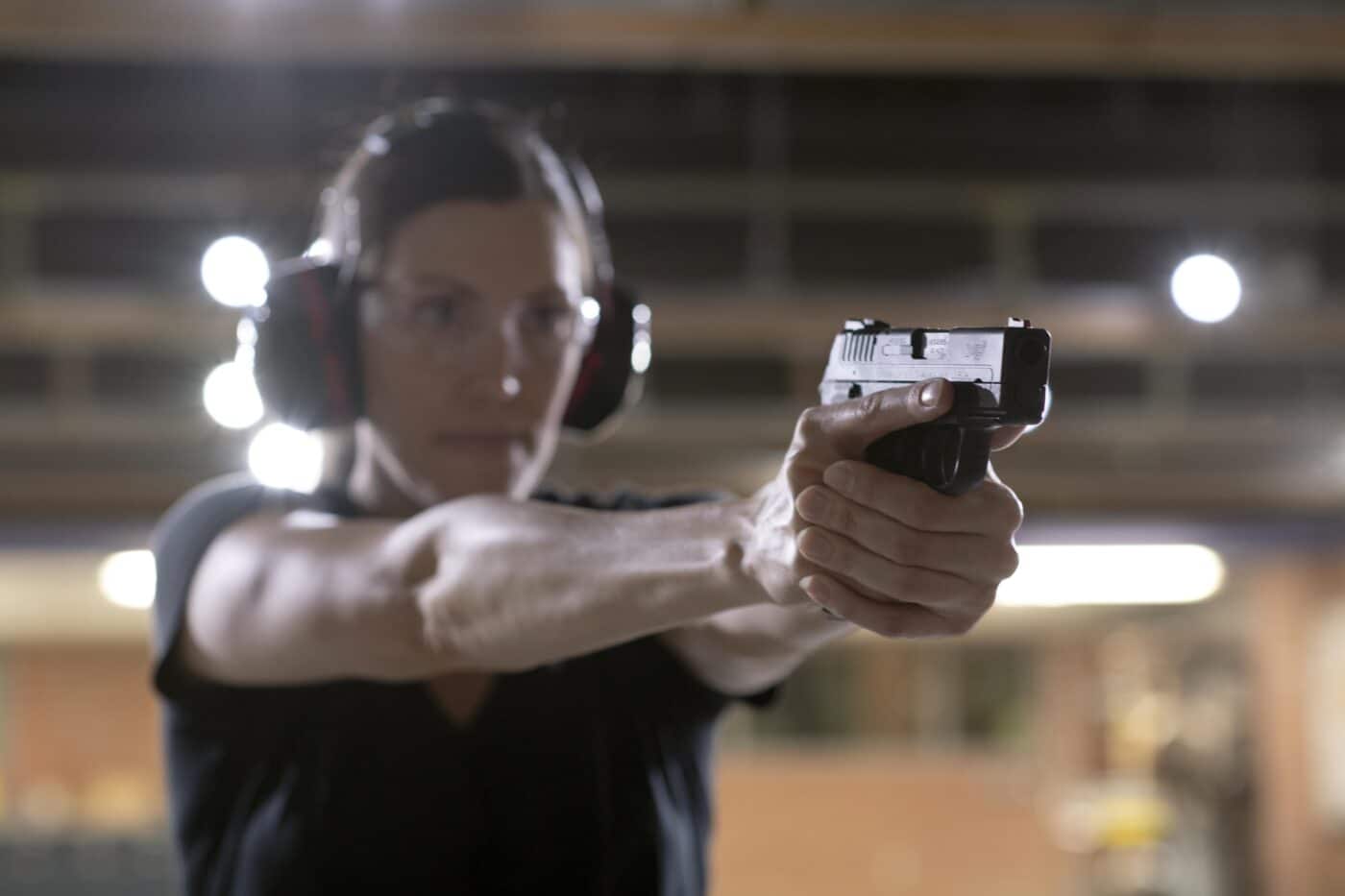
Entering my 50th year as a firearms instructor, I’m more convinced than ever that no one stance is ideal for all people in all shooting situations. The variables are many: the surface you’re standing on, the angle of that which you must shoot at, and the individual capabilities of that practitioner at that time.
This tells us that the answer to this question shouldn’t involve an or, but rather, an and.
Understanding the Difference
First, let’s quantify our terms. Too many people think “Weaver stance” simply describes any manner of shooting a handgun with both hands. In fact, it’s a very specific, isometric-based shooting stance. Both elbows are bent, with the gun hand pushing forward and the support hand pulling rearward, with equal and opposite pressure.
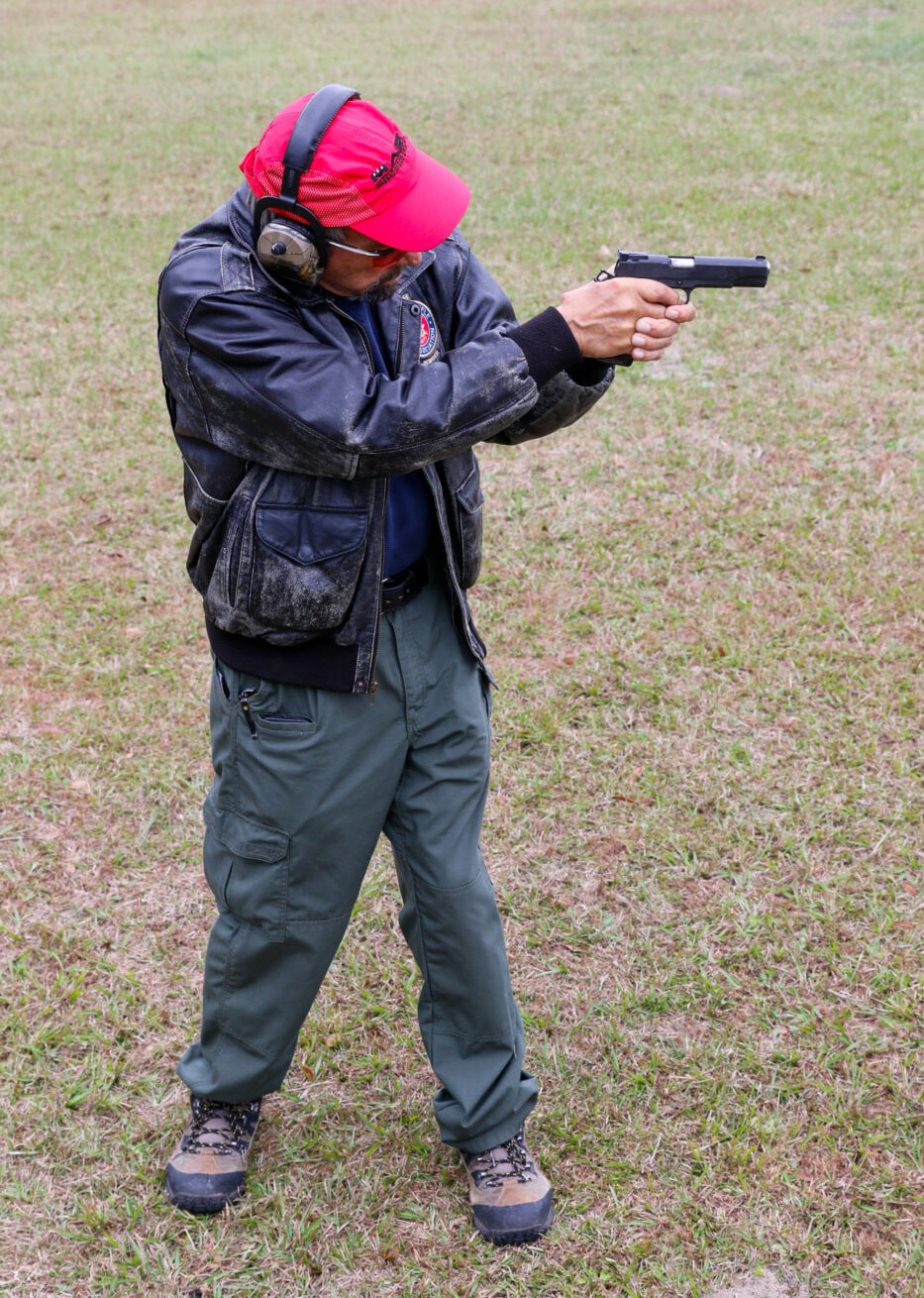
This is distinct from the Isosceles stance, in which both arms are extended toward the target, which tends to be based more on skeletal support.
In between those two is the Chapman stance, whose namesake originator dubbed it a “modified Weaver” stance. Ray Chapman’s shooting style had the gun arm locked, with the support arm bent and pulling the gun arm tightly into its shoulder socket.
We need to remember that any type of shooting stance is going to involve foot position, but for purposes of this discussion, we also remember that hips and arms come into it, too. This is particularly true with multiple and/or moving targets.
Each of the shooting stances has different dynamics going on with it. Accordingly, each has specific strengths, but also specific weaknesses. We’ll discuss those in more detail as this four-part series continues.
The Need for Versatility
Most of us who teach the defensive handgun consider it to be a martial art, so let’s do a little comparison. Would any of us sign a contract to pay for training at a boxing gym that taught us only one punch? Of course not. There is a time for the cross and the hook, for the jab and the uppercut. Certainly, each of us will have a “best punch,” but when in the swirl of the actual fight we see the opponent is vulnerable to another type of blow, we want to be able to swiftly deliver that particular punch with an experienced fist.
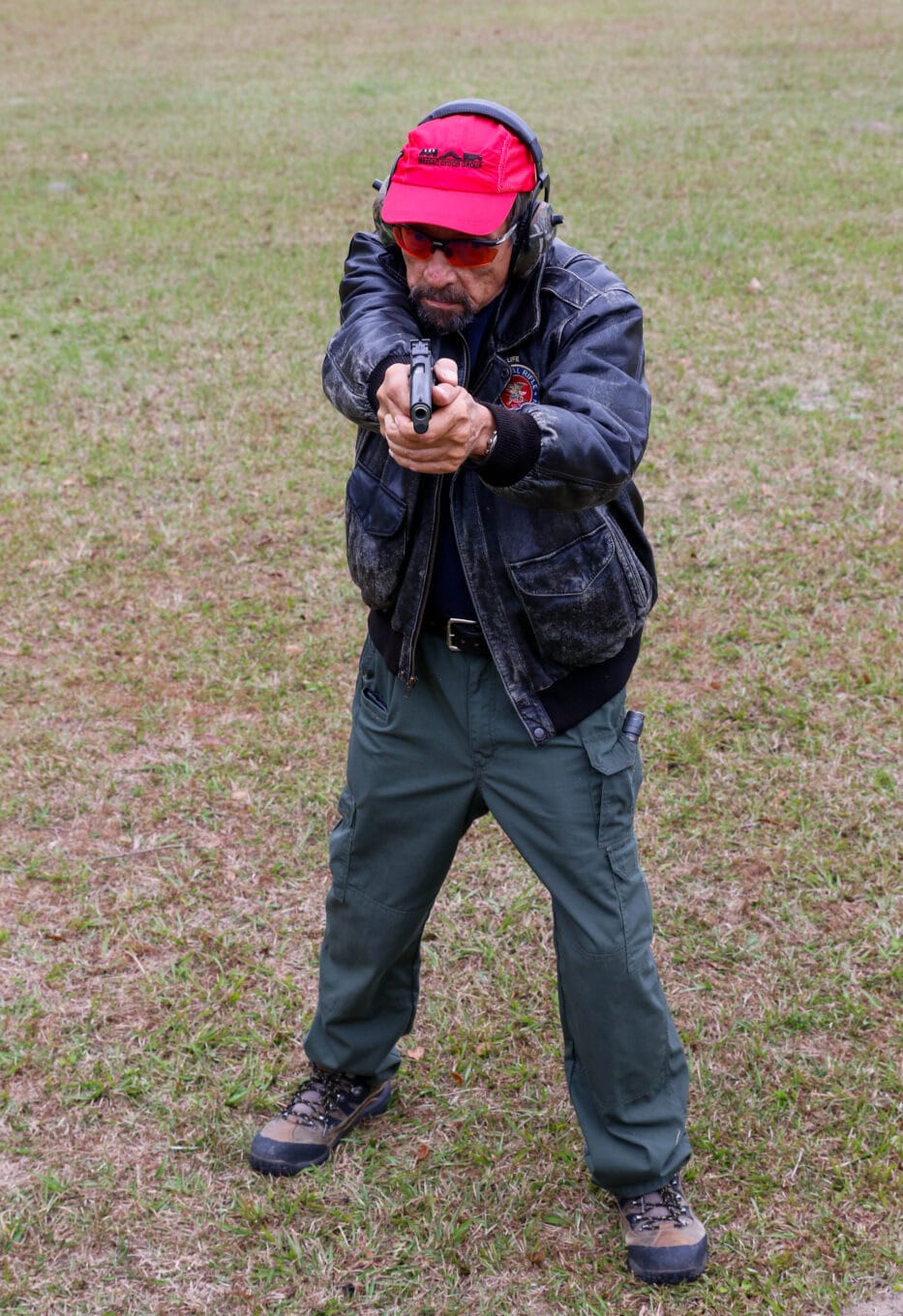
In addition to target angle (and movement), we have to look at the capabilities of the launching platform, that is, the human body. What is the given practitioner’s range of movement? What is their level of physical strength? Do they have injuries that might make a different stance more effective for them than what they are using now?
My wife, a state and regional shooting champion, prefers Isosceles. When she sustained an injury to the elbow of her dominant arm, she found an extended arm painful and simply switched to the classic Weaver stance until she recovered. She was shooting her 9mm from classic Weaver the day she captured the overall win at a match in Illinois, beating all comers including all the men. When her elbow healed, she returned to her “best punch,” the Isosceles stance, but was grateful that she already had the Weaver stance in her toolkit when she needed it.
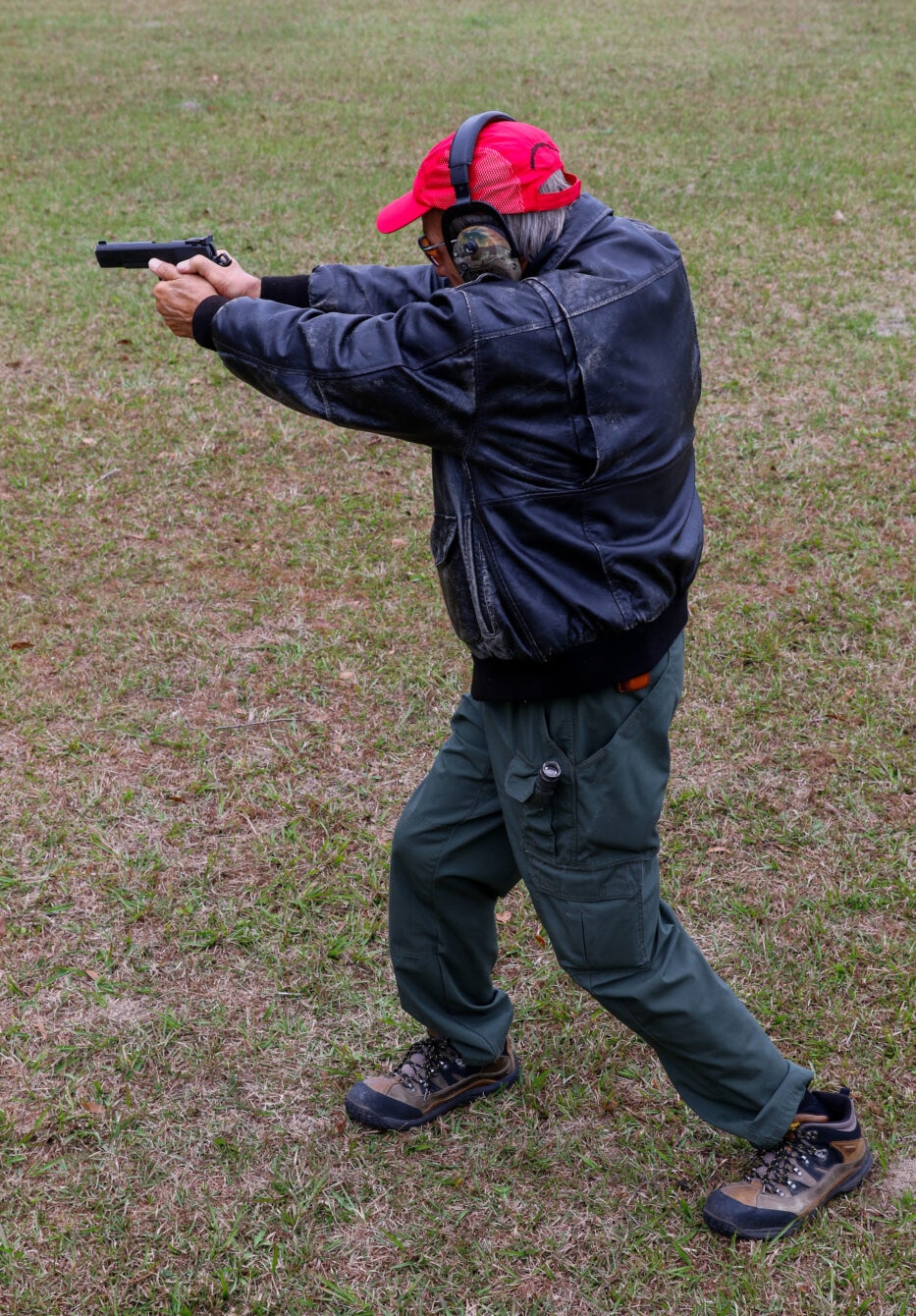
Conversely, I’ve seen a lot of slender-armed shooters who don’t have a lot of muscle mass suddenly have autopistol reliability problems when they have to shoot from Weaver in a pistol class. They may simply not have enough strength to lock their wrist, which bends slightly in a tight Weaver, causing a “limp-wrist” failure of the pistol to return to battery. This problem disappears, in my experience, when we switch them into a straight-armed, locked-wrist stance such as Chapman or Isosceles.
Even with the most physically fit shooter, being able to flow between the stances like a boxer flowing between punches allows tracking of moving targets or tracking between multiple targets more efficiently. Yes, one possible answer is to maintain the same arm and torso position and move one’s feet to “address the target” in such situations, but that is not always possible.
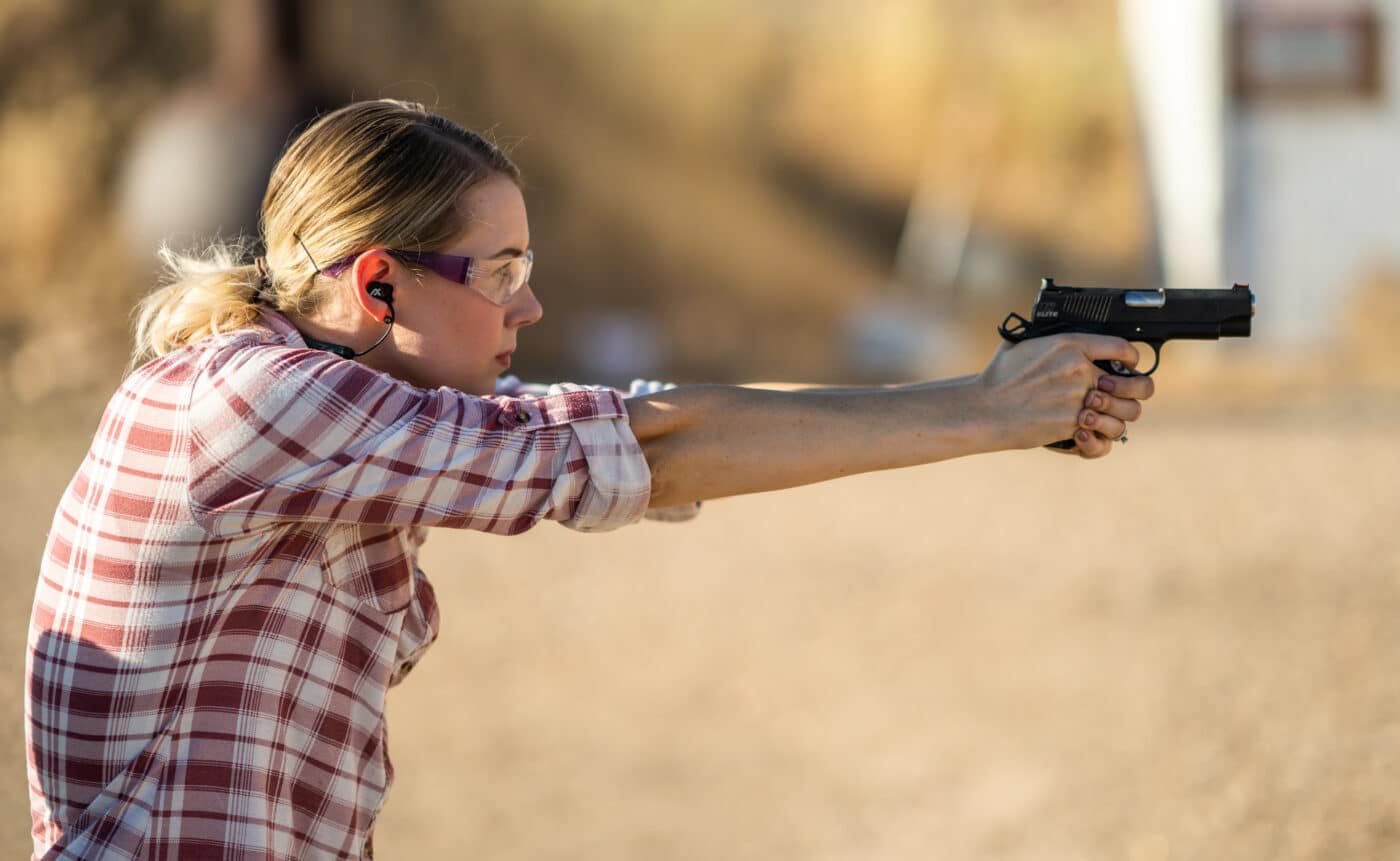
How do we move our lower body for such tracking if we are on stairs, in thick mud or deep snow, or otherwise trapped in a certain place? Let’s say our Waze app failed to warn us that when we turned the next corner we’d drive right into the middle of a riot, and suddenly find ourselves trapped in our vehicle amidst a riot that brings us under violent attack by hostile, armed people? We are seat-belted in place, and for whatever reason unable to drive away. If you know how to shoot from classic Weaver, you can engage the threat coming up from your left flank. If you know how to shoot from Isosceles, you can engage an attacker who is trying to smash through the passenger-side window with his deadly bludgeon.
Perspective
To fully understand and utilize any technique, we have to know where it came from, what it was designed for … and, just as importantly, what might contraindicate its use. In the following three parts of this series, we’ll explore the etiology and development, and the strengths and weaknesses, of each of the above shooting stances. We’ll also look at subtle options and adaptations which their users have developed over the years. Stay tuned.
Editor’s Note: Please be sure to check out The Armory Life Forum, where you can comment about our daily articles, as well as just talk guns and gear. Click the “Go To Forum Thread” link below to jump in and discuss this article and much more!
Join the Discussion
Continue Reading
Did you enjoy this article?

 365
365






